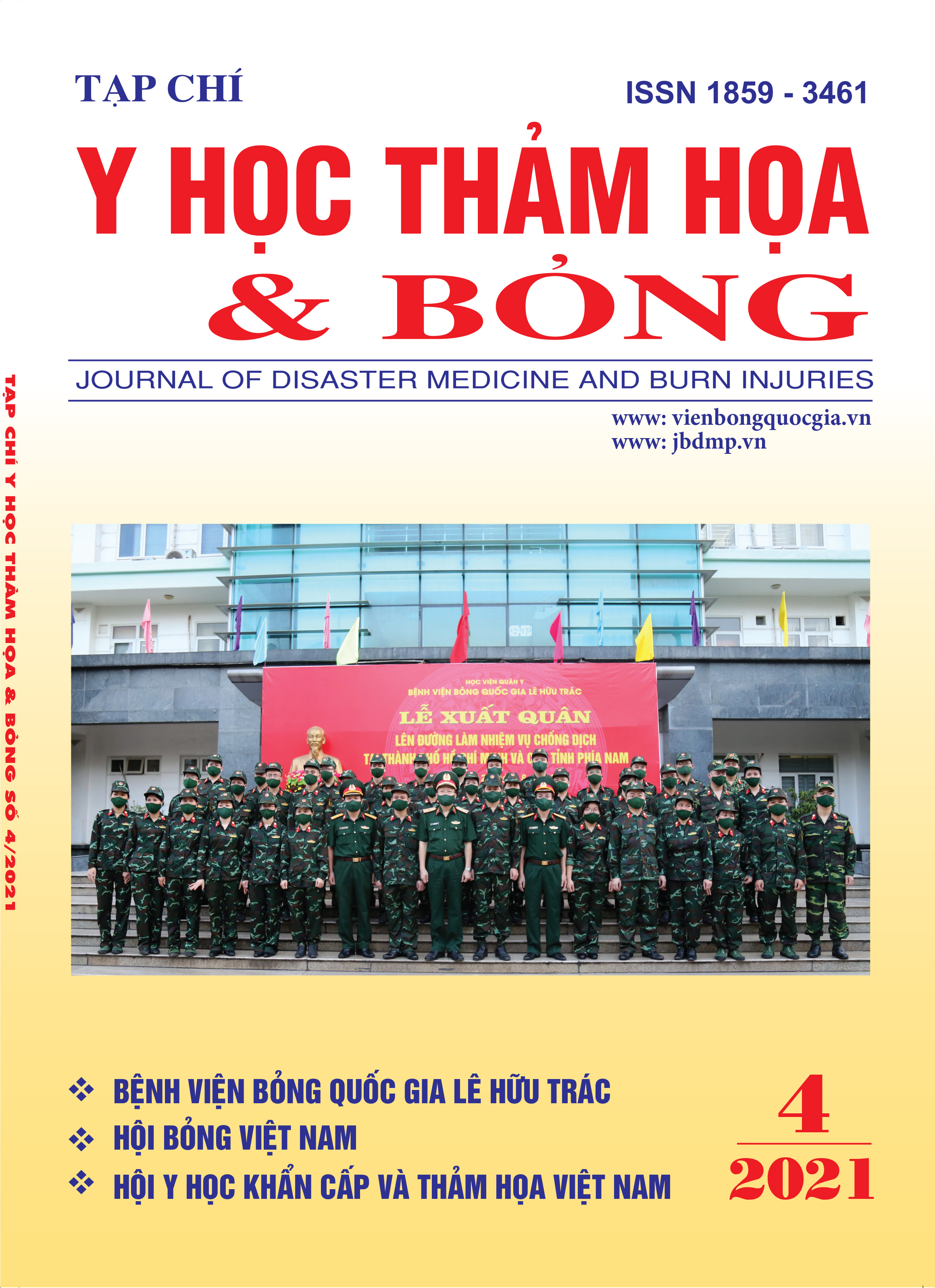Hiệu quả của phương thức thông khí nhân tạo tư thế nằm sấp điều trị hội chứng suy hô hấp cấp tiến triển trên bệnh nhân bỏng nặng (Thông báo lâm sàng).
Nội dung chính của bài viết
Tóm tắt
Hội chứng suy hô hấp cấp tiến triển là một biến chứng thường gặp ở bệnh nhân bỏng nặng, đặc biệt bỏng hô hấp kết hợp. Thông khí nhân tạo tư thế nằm sấp được xem là có hiệu quả cải thiện trao đổi khí ở những bệnh nhân suy hô hấp cấp tiến triển mức độ nặng. Ở bệnh nhân bỏng, TKNT tư thế nằm sấp đặt ra những thách thức lớn trong công tác chăm sóc và theo dõi bệnh nhân.
Do đó, đến nay rất ít nghiên cứu trên thế giới được công bố áp dụng phương thức thông khí này. Chúng tôi báo cáo điều trị thành công hai ca bỏng biến chứng suy hô hấp cấp tiến triển mức độ nặng được áp dụng phương thức thông khí nhân tạo tư thế nằm sấp.
Chi tiết bài viết
Tài liệu tham khảo
1. Piehl MA, Brown RS (1976). Use of extreme position changes in acute respiratory failure. Crit Care Med; 4(1): 13-14.
2. Guerin C, Reignier J, Richard JC, et al (2013). Prone positioning in severe acute respiratory distress syndrome. N Engl J Med; 368(23): 2159-2168.
3. Romero CM, Cornejo RA, Galvez LR, et al (2009). Extended prone position ventilation in severe acute respiratory distress syndrome: a pilot feasibility study. J Crit Care; 24(1): 81-88.
4. Hale et al (2012). Prone positioning improves oxygenation in adult burn patients with severe acute respiratory distress syndrome. Journal of Trauma and Acute Care Surgery; 72(6): 1634-1639.
5. Pelosi P, Tubiolo D, Mascheroni D, et al (1998). Effects of the prone position on respiratory mechanics and gas exchange during acute lung injury. Am J Respir Crit Care Med; 157(2): 387-393.
6. Gattinoni L, Tognoni G, Pesenti A, et al (2001). Effect of prone positioning on the survival of patients with acute respiratory failure. N Engl J Med; 345 (8): 568-573.
7. Munshi L., Del Sorbo L., Adhikari N K., et al (2017). Prone position for acute respiratory distress syndrome. Annals of the American Thoracic Society; 14(4): 280-288.
8. Sud S, Friedrich JO, Adhikari NKJ, et al (2014). Effect of prone positioning during mechanical ventilation on mortality among patients with acute respiratory distress syndrome: a systematic review and meta-analysis. CMAJ; 186 (10): 381-390.
2. Guerin C, Reignier J, Richard JC, et al (2013). Prone positioning in severe acute respiratory distress syndrome. N Engl J Med; 368(23): 2159-2168.
3. Romero CM, Cornejo RA, Galvez LR, et al (2009). Extended prone position ventilation in severe acute respiratory distress syndrome: a pilot feasibility study. J Crit Care; 24(1): 81-88.
4. Hale et al (2012). Prone positioning improves oxygenation in adult burn patients with severe acute respiratory distress syndrome. Journal of Trauma and Acute Care Surgery; 72(6): 1634-1639.
5. Pelosi P, Tubiolo D, Mascheroni D, et al (1998). Effects of the prone position on respiratory mechanics and gas exchange during acute lung injury. Am J Respir Crit Care Med; 157(2): 387-393.
6. Gattinoni L, Tognoni G, Pesenti A, et al (2001). Effect of prone positioning on the survival of patients with acute respiratory failure. N Engl J Med; 345 (8): 568-573.
7. Munshi L., Del Sorbo L., Adhikari N K., et al (2017). Prone position for acute respiratory distress syndrome. Annals of the American Thoracic Society; 14(4): 280-288.
8. Sud S, Friedrich JO, Adhikari NKJ, et al (2014). Effect of prone positioning during mechanical ventilation on mortality among patients with acute respiratory distress syndrome: a systematic review and meta-analysis. CMAJ; 186 (10): 381-390.


